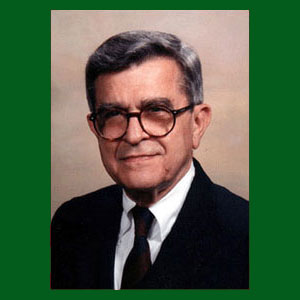
Dr. Sarno and spondylolisthesis seem like very different topics of discussion, but are actually closely related in many patients. John E. Sarno, M.D. was a world-renowned physician who is no longer in practice, but forever changed the face of modern medicine with his ground-breaking work on chronic pain. Dr. Sarno practiced for decades out of the famous Rusk Institute of Rehabilitation Medicine at New York Medical Center in Manhattan. Sarno treated many celebrities, politicians and other people of note, propagating his ideas in the media much to the benefit of the entire chronic pain patient population worldwide.
Dr. Sarno is best known for his work with a diagnosis called tension myositis syndrome (also called tension myoneural syndrome in more recent references). His theories speculate that most chronic pain is not structurally-motivated, but instead serves purely psychoemotional needs for defense and repression. Sarno is especially known as a back pain expert, helping many people with intractable and unresponsive conditions to achieve full recoveries without drugs, injections or surgery. Dr. Sarno was always an active scholar of pain and was interested in all the research on his specialty. One of the conditions he investigated was spondylolisthesis.
This fascinating article explores Dr. Sarno’s work in relation to the listhesis diagnosis. We will explain his position that listhesis can be mistakenly blamed for pain, as well as provide evidence cited by the doctor himself that the condition might not be as innocent as other “scapegoat” structural issues in the backbone.
Spondylolisthesis as a True Source of Pain
Dr. Sarno was always a skeptic when it comes to any common structural abnormality of the spine being the actual cause of pain. He described the clinical appearance of spondylolysis and spondylolisthesis in his book Healing Back Pain, and even acknowledged that given the circumstances involved, the latter condition might not be benign. However, he quickly pointed out that in his clinical experience, all cases have been of a universally non-pathological nature.
Dr. Sarno cited some statistical studies, including a few in particular that were performed by Doctors Magora and Schwartz, regarding the link between common structural diagnoses and the existence of actual back pain. These studies, published in The Scandinavian Journal of Rehabilitation Medicine, showed no relationship between virtually all of the common diagnoses, including arthritis, vertebral abnormalities, spina bifida and even the pre-cursor to listhesis, called spondylolysis. However, the study did show a higher incidence of back pain among people who demonstrate full spondylolisthesis, proving that some inherent pathology might exist. However, Sarno’s mention of the study does not specify the degree of listhesis present and he also cited a study by Dr. Splithoff where no relationship was found between listhesis and back pain.
Dr. Sarno and Spondylolisthesis as a Scapegoat
John Sarno stated very simply that he had never seen an inherently pathological case of spondylolisthesis, despite conceding that these cases might exist. He reported that in his experience, pain experienced in combination with coincidental listhesis is always TMS.
We concede that Sarno is a genius and true innovator, but that his clinical experience with spondylolisthesis might be limited, if he has never seen a pathological case profile. We have seen many, where physical functionality and life itself were directly threatened by ultra-severe vertebral slippage that compromised the entire integrity of the backbone, often compressing spinal nerves and the spinal cord in the process. If Sarno had dealt with any patients with this type of profile, his tone might be slightly different in the chapter on the traditional back pain diagnoses in Healing Back Pain, at least when it comes to listhesis. However, in all fairness, patients who sought out Sarno are not those with such obvious structural defects. They are people who had suspect cases of structural causation and often already had doubts that their anatomical woes were not the reason for their pain.
Dr. Sarno and Spondylolisthesis Treatment
We see many patients in clinical settings who are suffering from tension myositis syndrome, as Sarno would call it. We prefer not to use the term, as it is ridiculously limiting and incorrect in its implied mechanism based on nomenclature. Let’s say instead that these people are definitively suffering from mindbody pain syndromes, as the title is more inclusive of the many possible mechanisms of action and causative conditions. Virtually all of these patients are mismanaged medically and have no inclination that their pain is not structurally-motivated. Worse still, most are not only non-receptive to the idea, but are indeed openly hostile to the suggestion. This proves that the stigma of psychosomatic health issues is still alive and that the universal nature of mindbody health issues remains completely misunderstood by the public at large.
For patients who can find their way towards information that explains the concept of mindbody disorders, there is always hope. Sarno reported truly remarkable cure rates using his own knowledge therapy program, while we can mirror this efficacy given our extensive experience with various forms of knowledge therapy and coaching practices that fall outside of the physical listhesis treatment tradition.
For patients who are interested in understanding more about how the mind and body work hand in hand to create all states of pain, pleasure, health, illness and injury, we highly recommend undertaking knowledge therapy treatment. For more information on the topic as a whole, please search this website to find the many literary offerings regarding tension myositis syndrome, Dr John Sarno, mindbody pain and knowledge therapy. The Cure Back Pain Network remains the premier source of all data on this important topic and eclipses the database of even the most active doctors who work in the mindbody sector of medicine. Additionally, all of our information is completely free, so there is no risk at all to immerse yourself in the subject and learn all you can. It might just lead to the cure you are been pursuing for years.
Spondylolisthesis > Psychosomatic Spondylolisthesis Pain > Dr. Sarno and Spondylolisthesis



